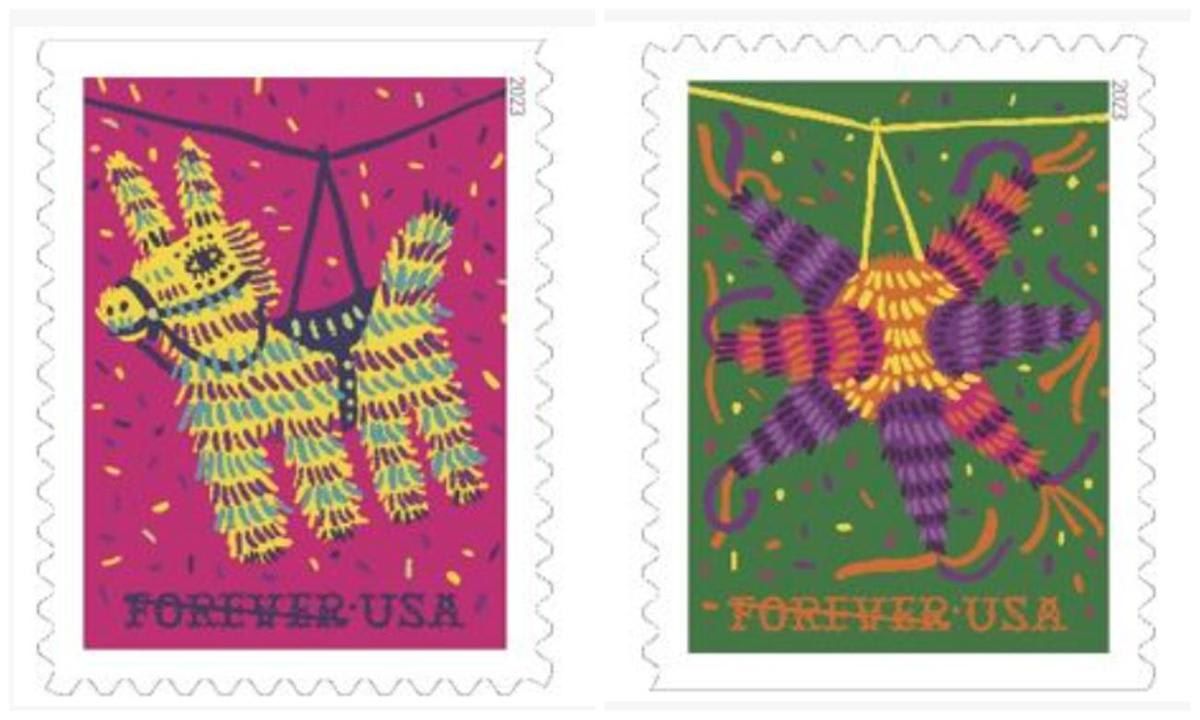The U.S. Postal Service has again taken a colorful and festive step in honoring Hispanic Heritage Month, which runs from September 15th to October 15th. This year, they’ve unveiled a vibrant collection of piñatas stamps at the 36th Annual Piñata Festival. These Forever Stamps feature four captivating designs - two donkeys and two seven-pointed stars - celebrating the beloved Mexican tradition of piñatas.
This marks the third consecutive year that the USPS has issued Hispanic-themed stamps, following the Day of the Dead stamps in 2021 and the Mariachi stamps in 2022.
The Significance of Piñatas
Isaac Cronkhite, Chief Processing and Distribution Officer and Executive Vice President of the U.S. Postal Service highlighted the importance of celebrating cultural diversity through stamps. He stated, “Ours is truly a world culture, and our stamps allow us to weave together the many threads of our national tapestry, and piñatas are the perfect example of this.”
Piñatas have a rich history that spans continents and centuries. Scholars believe the tradition may have originated in China, where a practice similar to piñata-breaking was observed during New Year’s celebrations. It involved a decorated animal figurine being struck with a stick to release seeds contained within. This practice eventually found its way to Italy in the 14th century, becoming a part of Lenten festivities, using undecorated clay pots filled with sweets.
As this custom spread to Spain, it became a celebration during Lent. The Spanish word “piñata,” means “fragile pot.” The piñata was used by Spanish missionaries in the 16th century as a tool for religious instruction, symbolizing the devil and temptation. Breaking the piñata represented the triumph of good over evil.
The tradition merged with indigenous customs when it arrived in the New World. For example, the Aztecs decorated clay pots with feathers and filled them with small gifts, broken open in front of their gods as offerings. Over time, piñatas became an integral part of celebrations in Mexico and beyond, featuring in holidays, birthdays, anniversaries, and weddings.
The Making of Piñatas
Historically, piñatas were crafted using clay pots as the base, covered with shredded paper and a paste made from water and flour or cornstarch called engrudo. The piñata-maker, or “piñatero,” would attach various forms to the prepared pot, often resembling animals, stars, or other imaginative designs. Tissue paper strips would then be glued over the structure, creating the vibrant and eye-catching piñatas we know today.
While traditional piñatas may have begun with clay pots, modern versions might use reed frames or balloons as bases. This adaptability makes piñatas suitable for any occasion or personal taste.
Modern Piñata Traditions
The traditions surrounding piñatas have remained remarkably similar to those of centuries ago. These colorful objects are filled with goodies and gifts and hung by ropes that can be adjusted to make hitting them more difficult. With their eyes covered, players take turns attempting to strike the piñata with a stick while the rope is pulled, causing it to sway unpredictably.
The excitement builds until someone successfully breaks the piñata, showering everyone with its contents. While the symbolism has evolved, the result remains unchanged - a joyous celebration and shared bounty.
Stamp Art and Design
The Piñatas stamps capture the essence of this lively tradition through digital illustrations of two classic piñata designs - the donkey and the seven-pointed star. The artwork features a vibrant color palette inspired by Mexican culture, reminiscent of the colors seen in small-town houses, traditional clothing, handmade toys, flowers, and piñatas themselves.
The donkey illustrations are set against a pink or orange background, while the stars are featured against a purple or green background. These background colors add to the overall festive feel of the stamps.
Víctor Meléndez, the artist behind the original illustrations, and Antonio Alcalá, the art director, deserve recognition for bringing the spirit of piñatas to life in this stamp collection. They are available in booklets of 20 and are classified as Forever stamps, ensuring that they will always be equivalent to the current First-Class Mail 1-ounce price.
,type=downsize)
